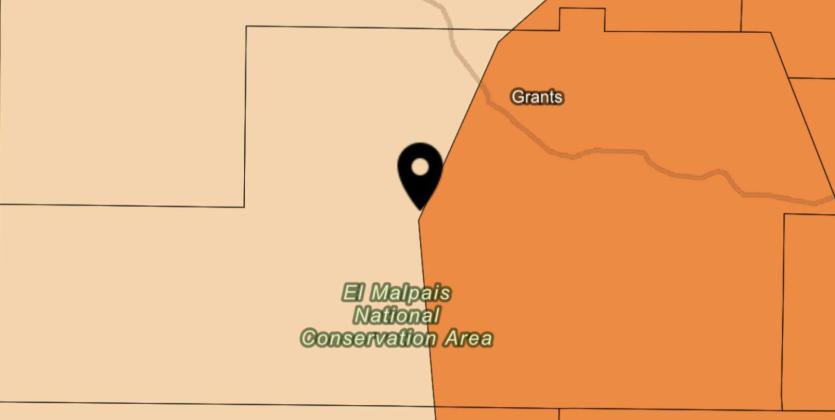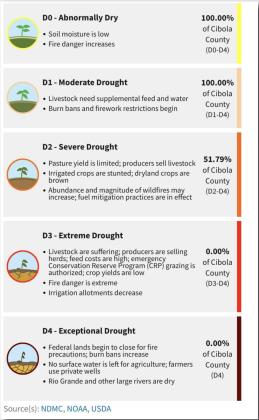After a dry and hot Springtime, drought conditions in Cibola County are improving.
2022 was an unprecedented year that caused record setting destruction for New Mexico, with the year setting records for the two largest wildfires in state history. To help keep fire danger low, Cibola County passed a burn ban in April. Despite work by local governments and forest managers, fire officials in Cibola remained on edge as the county was suffering through “Exceptional Drought,” the highest level of drought recognized by the official US drought tracking system.
Cibola County set a record in May. 2022 saw the driest May in the history of area tracking, which started 128 years ago in the Cibola area. At the beginning of June, Cibola saw a large wildfire, the Cerro Bandera Fire, which burned 939 acres of land in the Zuni Mountains.
Shortly after the fire was extinguished by an overwhelming force of fire personnel, the New Mexico monsoon season kicked in and an abundance of rain came to Cibola County. The rain came at a time the various governments of Cibola were considering firework restrictions as the July 4 holiday approached. The month of June saw such a large amount of rain that all firework restrictions were rescinded or simply not put into place. Rain has continued to fall in Cibola through the month of July.
The month of June, for all the rain it brought to Cibola County, was the second wettest June since tracking began for the area 128 years ago. June brought in 1.73 inches more rain than the month typically yields for the county. Data has not been released for the month of July.
Current Drought Rating in Cibola
After experiencing the second wettest June in its history, the Cibola area was pulled out of the worst of the drought. Significant rain came to Cibola, but it was only enough to alleviate the worst of the drought, every acre of Cibola remains in moderate drought, with just over half of the county in severe drought.
Moderate drought means, according to the United States Department of Agriculture, that soil moisture levels are low. When in this level of drought, livestock will need supplemental feed and water sources. Typically, burn bans are put in place at this stage of drought. However, due to significant rainfall Cibola has no active burn bans.
The Eastern half of Cibola County is currently affected by severe drought. Accounting for just over half of the county, 51.79 percent of Cibola falls in this category. Along with the difficulties and challenges from moderate drought, severe drought significantly raises the chances of a wildfire breaking out. Under this rating of drought, dryland crops begin to turn brown and even irrigated crop systems see stunted growth.
Current drought ratings are a far cry from early June, when just under half of the county was suffering through exceptional drought, the highest drought rating recognized by the United States.
June rains brought 1.73 inches of rain more than month’s average. Due to the rain, June 2022 was the second wettest June on record.
Currently, 448 acres of hay, 30 acres of haylage, 10,281 cattle, and 3,026 sheep in Cibola are considered to be suffering through drought according to the USDA.
Drought Data
The National Integrated Drought Information System is a tool used by the National Oceanic and Atmospheric Administration; a department of the United States known by many as the team who tracks Santa Claus during the Christmas holiday. NIDIS has been tracking drought in the Cibola area since 2006, and they use other historic data and environmental sampling to get a drought reading on years prior, all the way up to 1894.
Much of the data Cibola Citizen utilizes comes from NIDIS, but also NOAA and the US Department of Agriculture and the National Agricultural Statistics Service. These entities supply data for Cibola’s acreage of hay and number of livestock.


